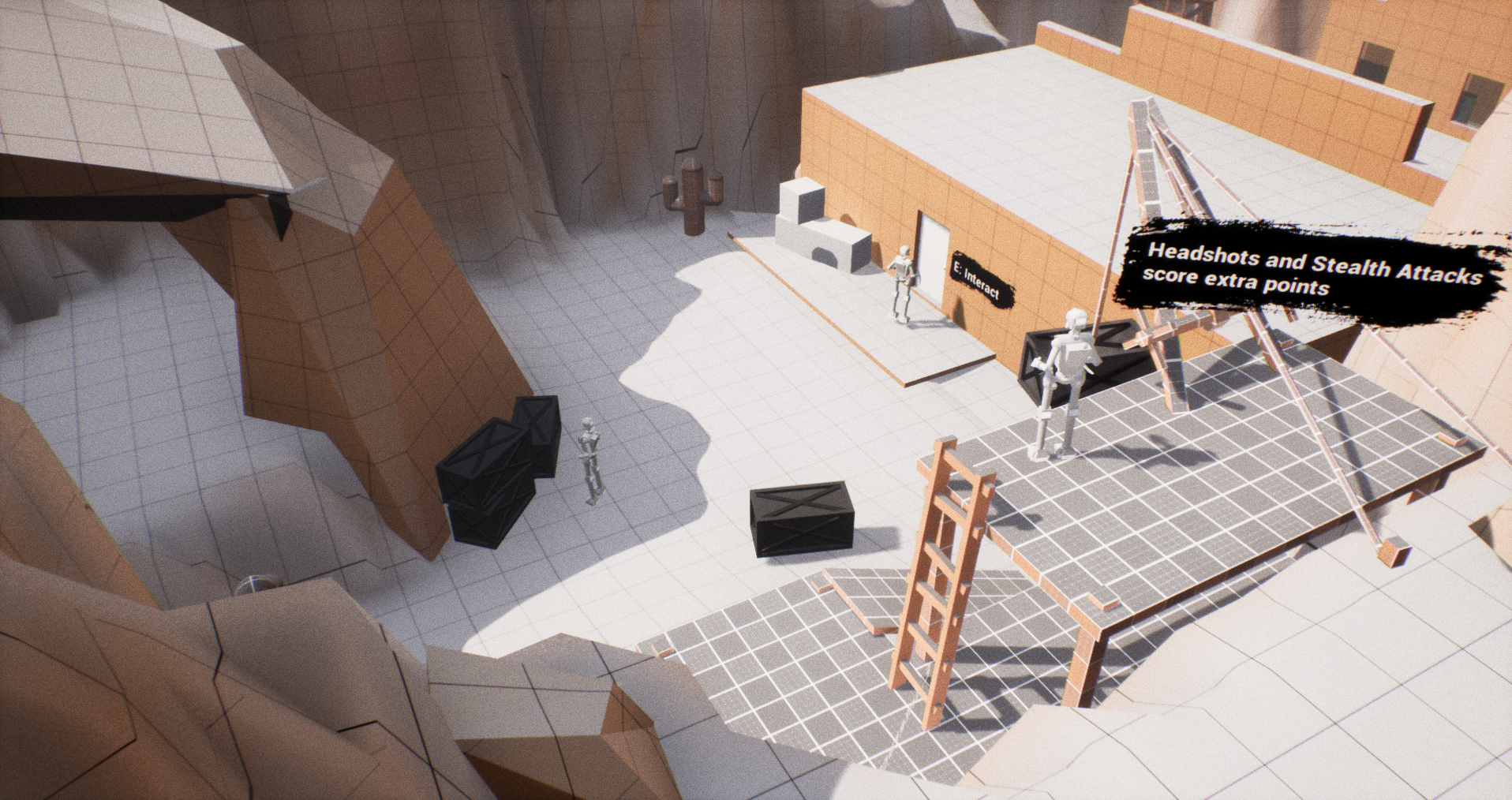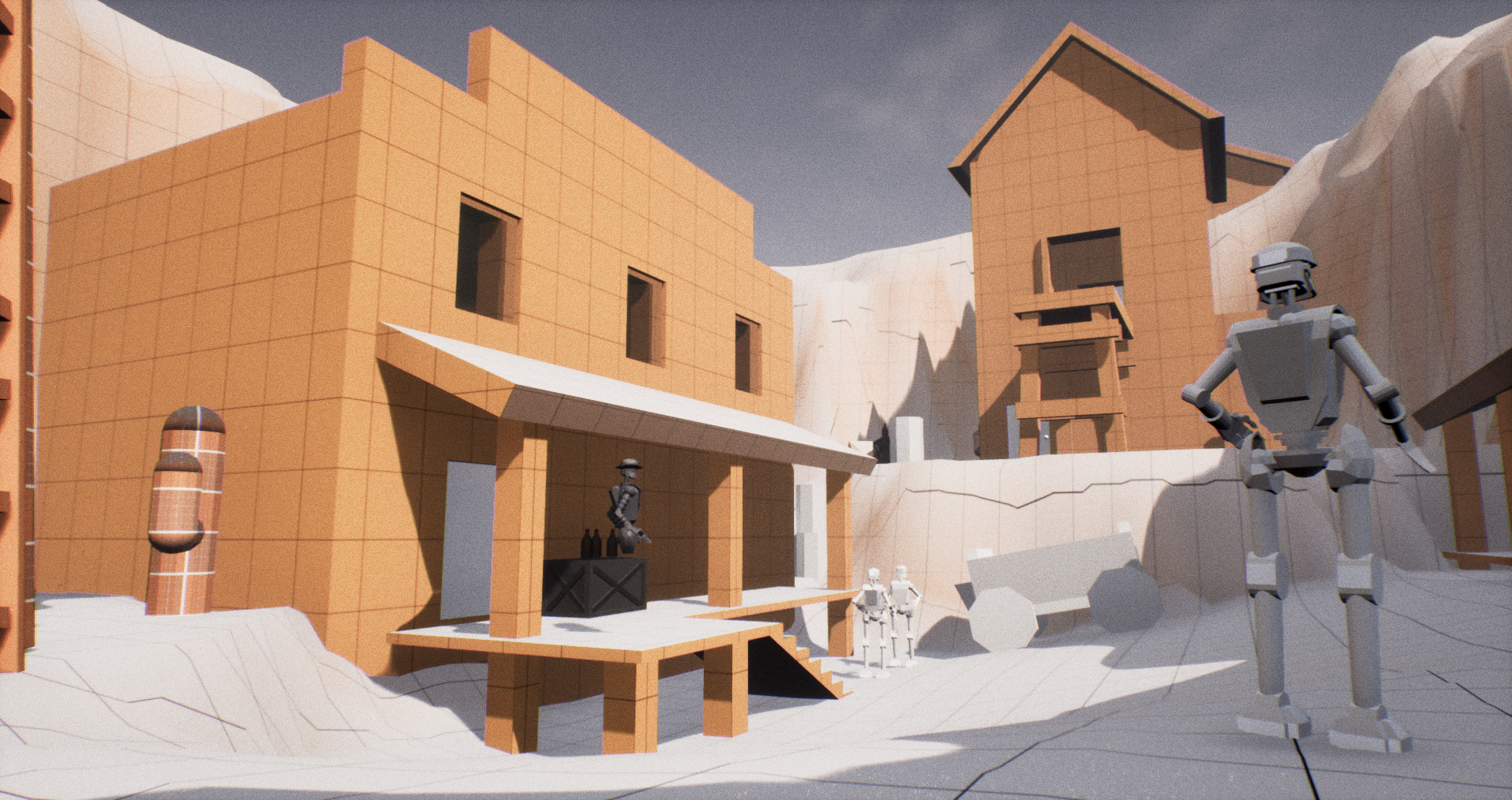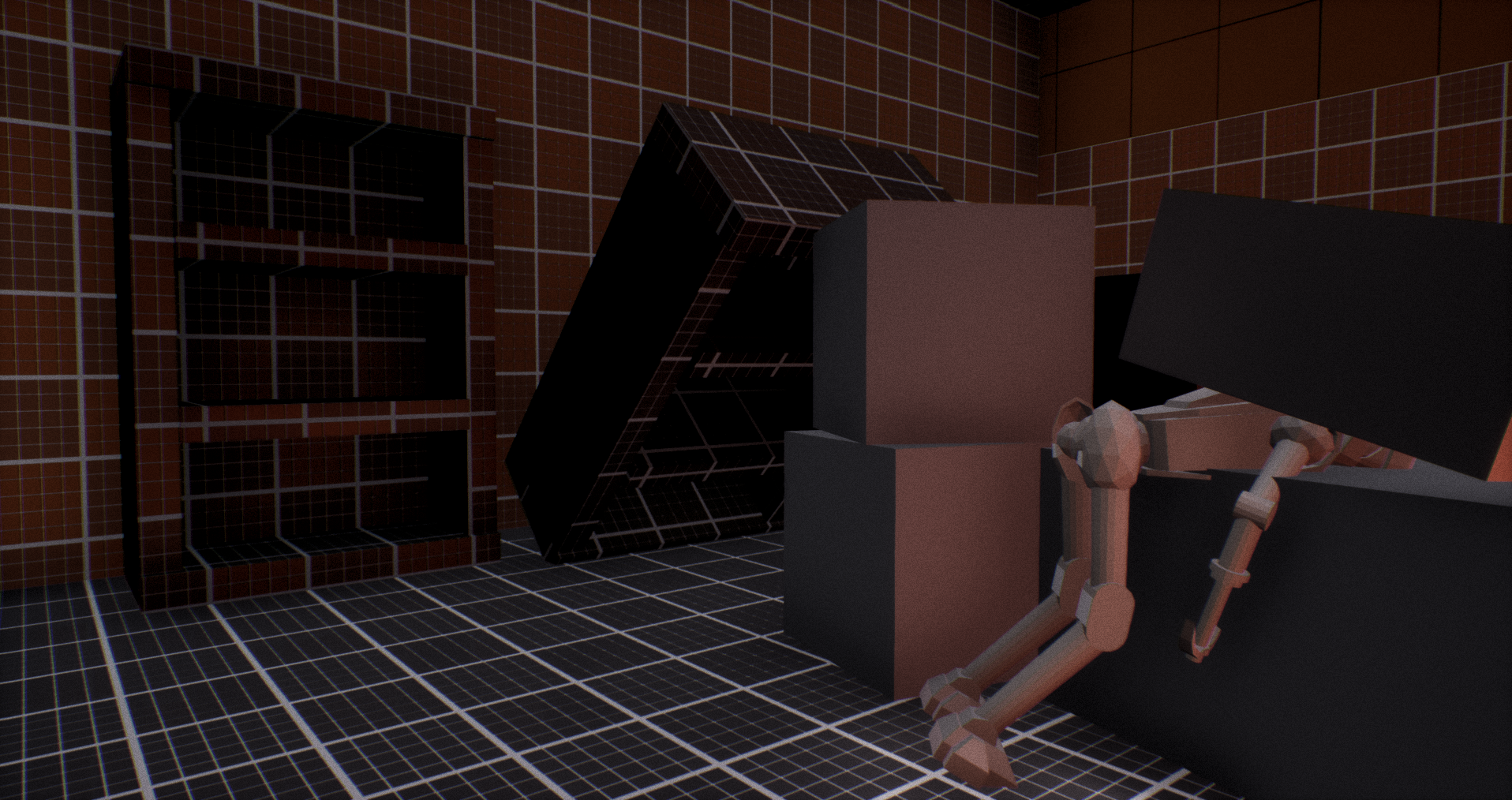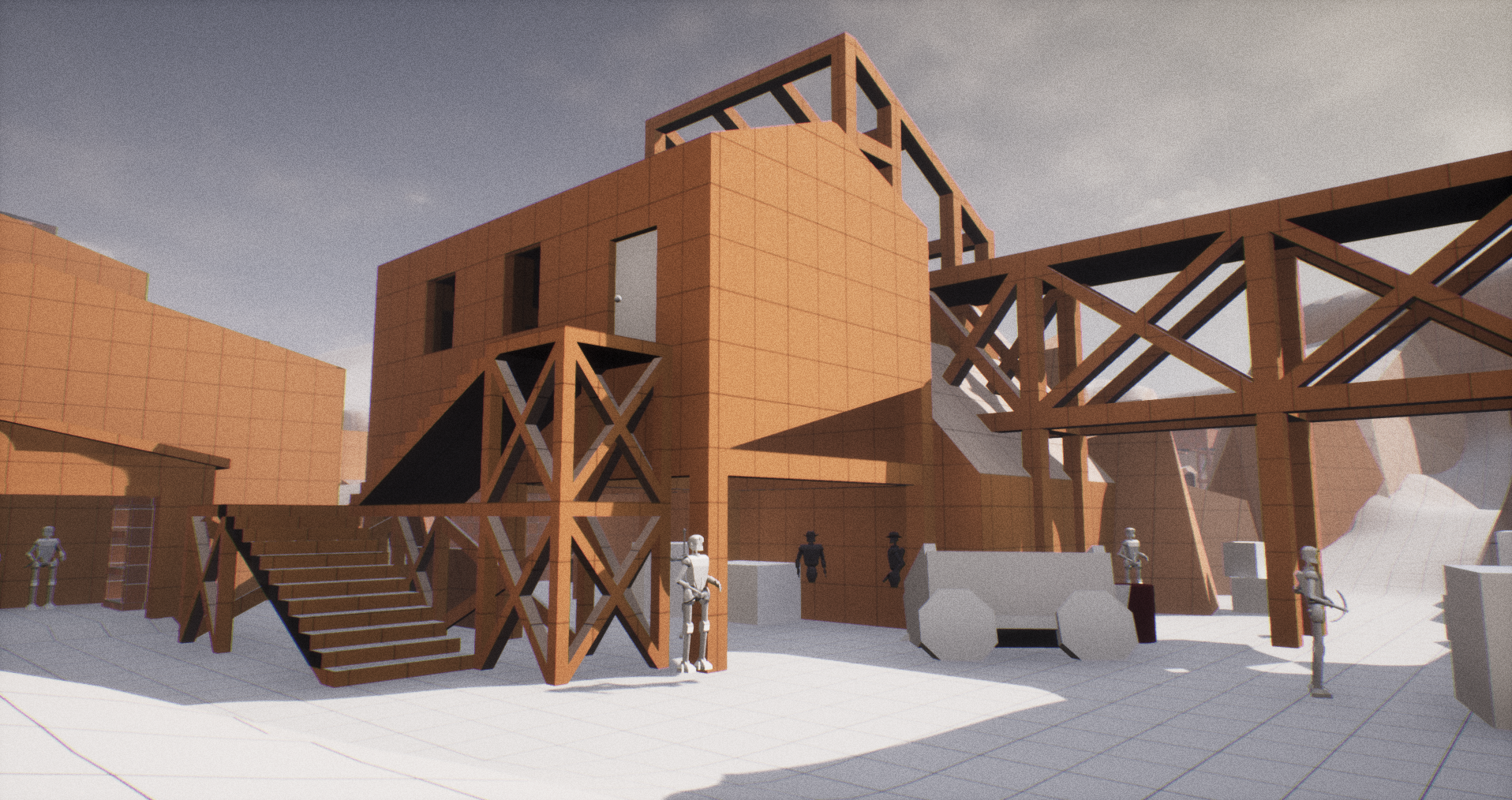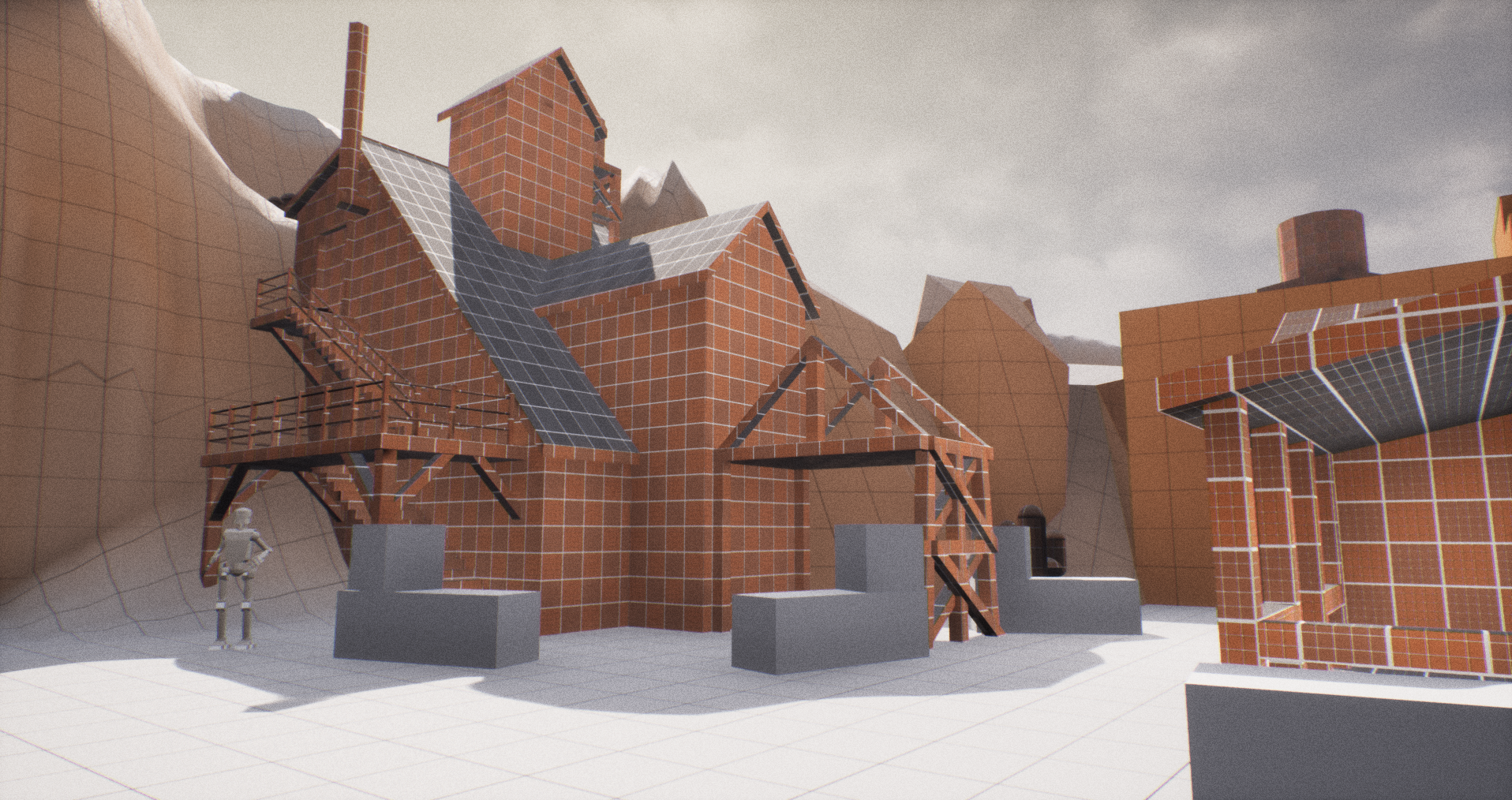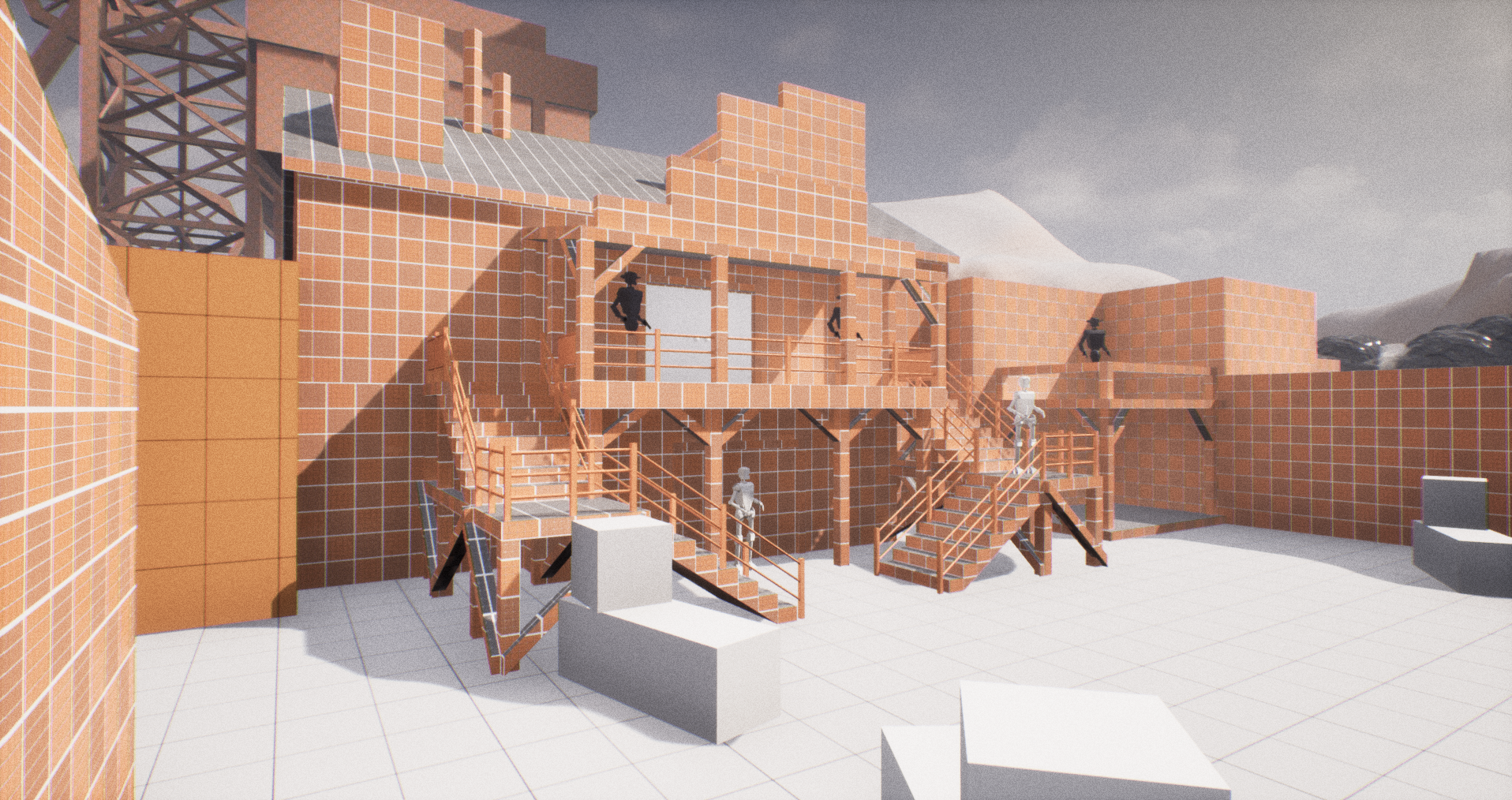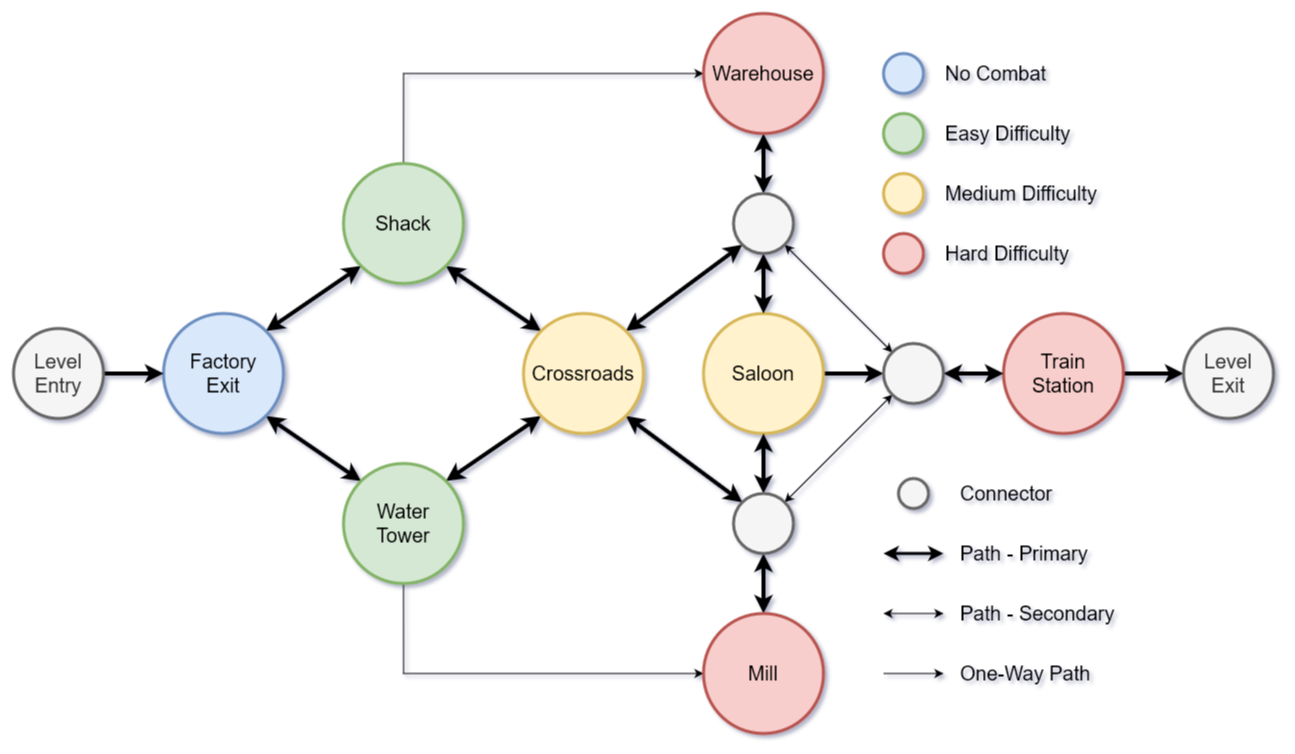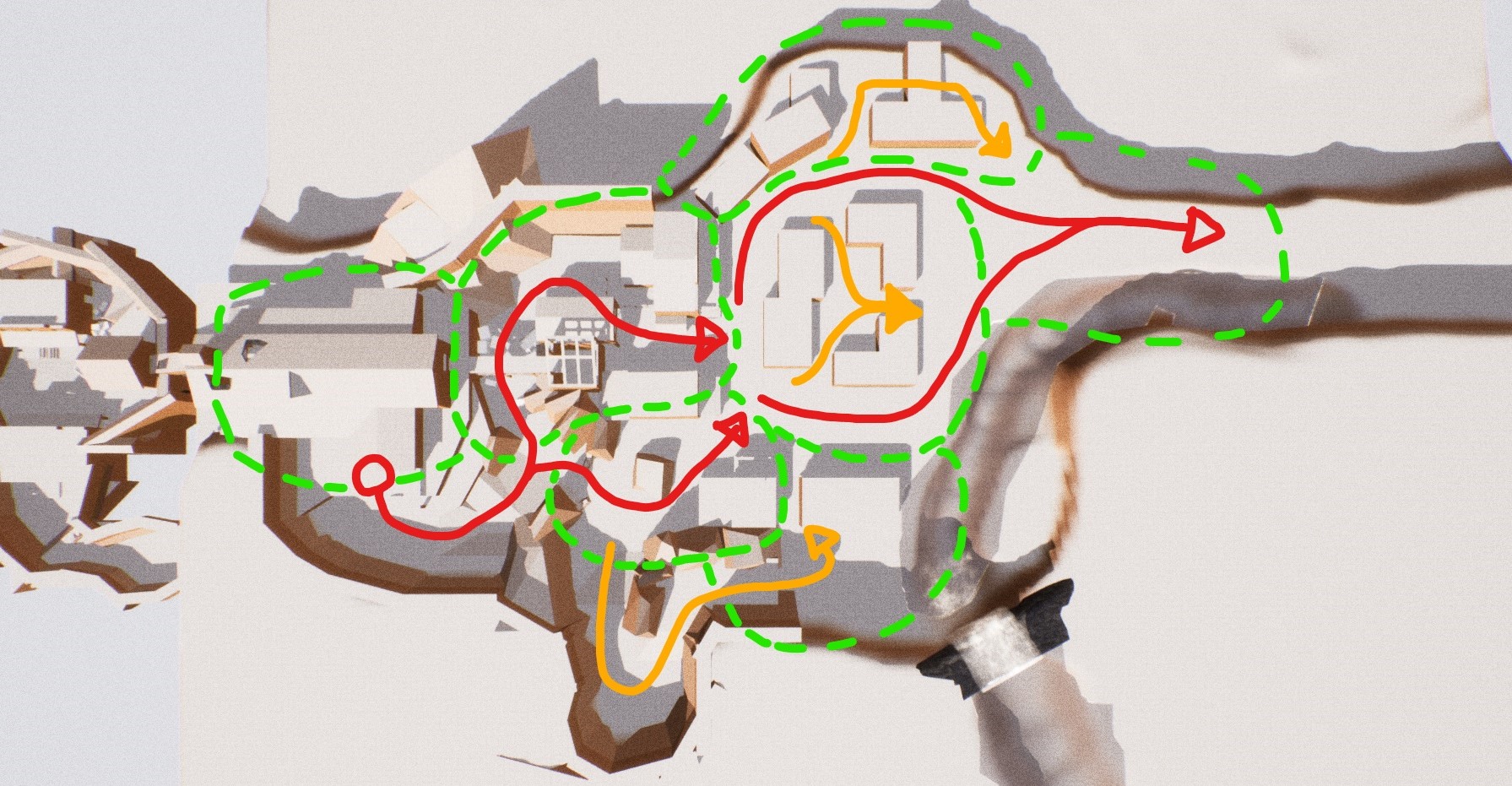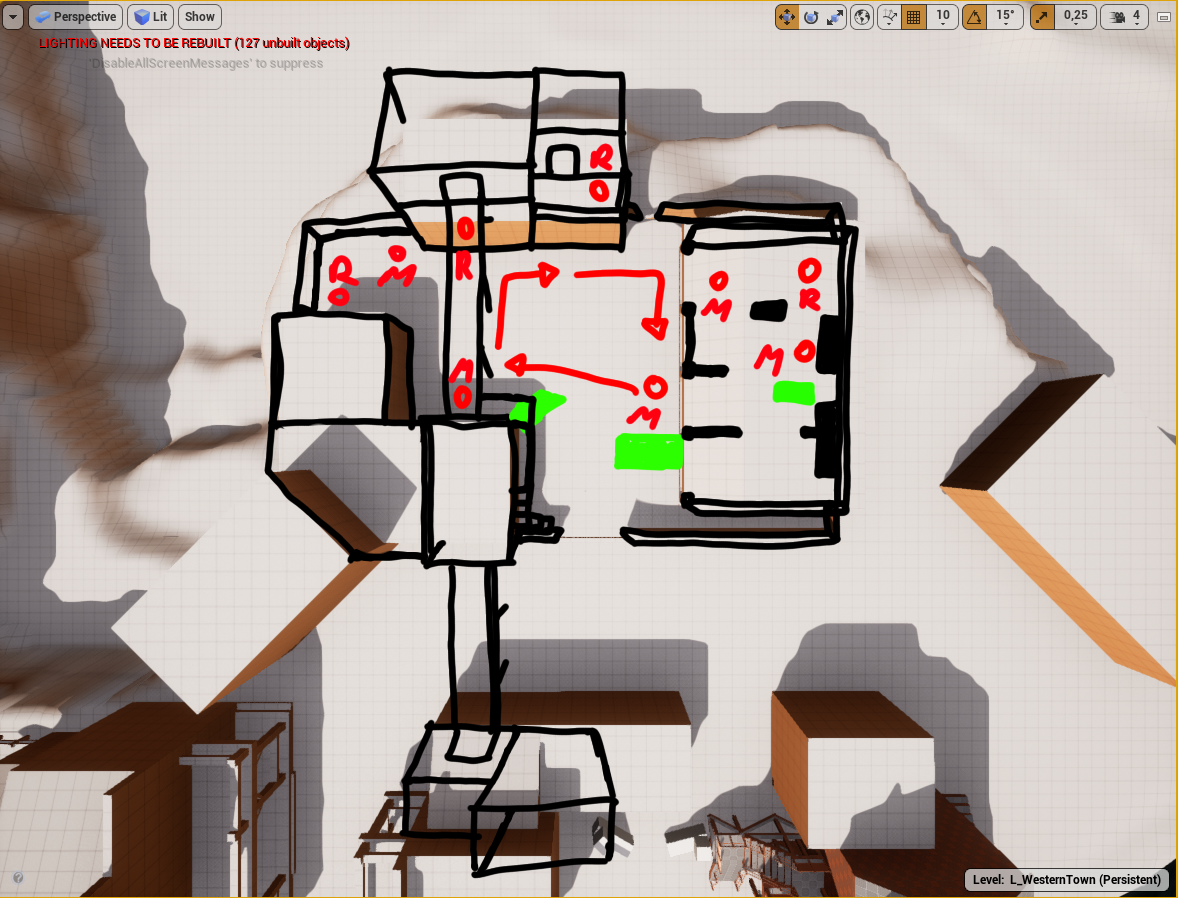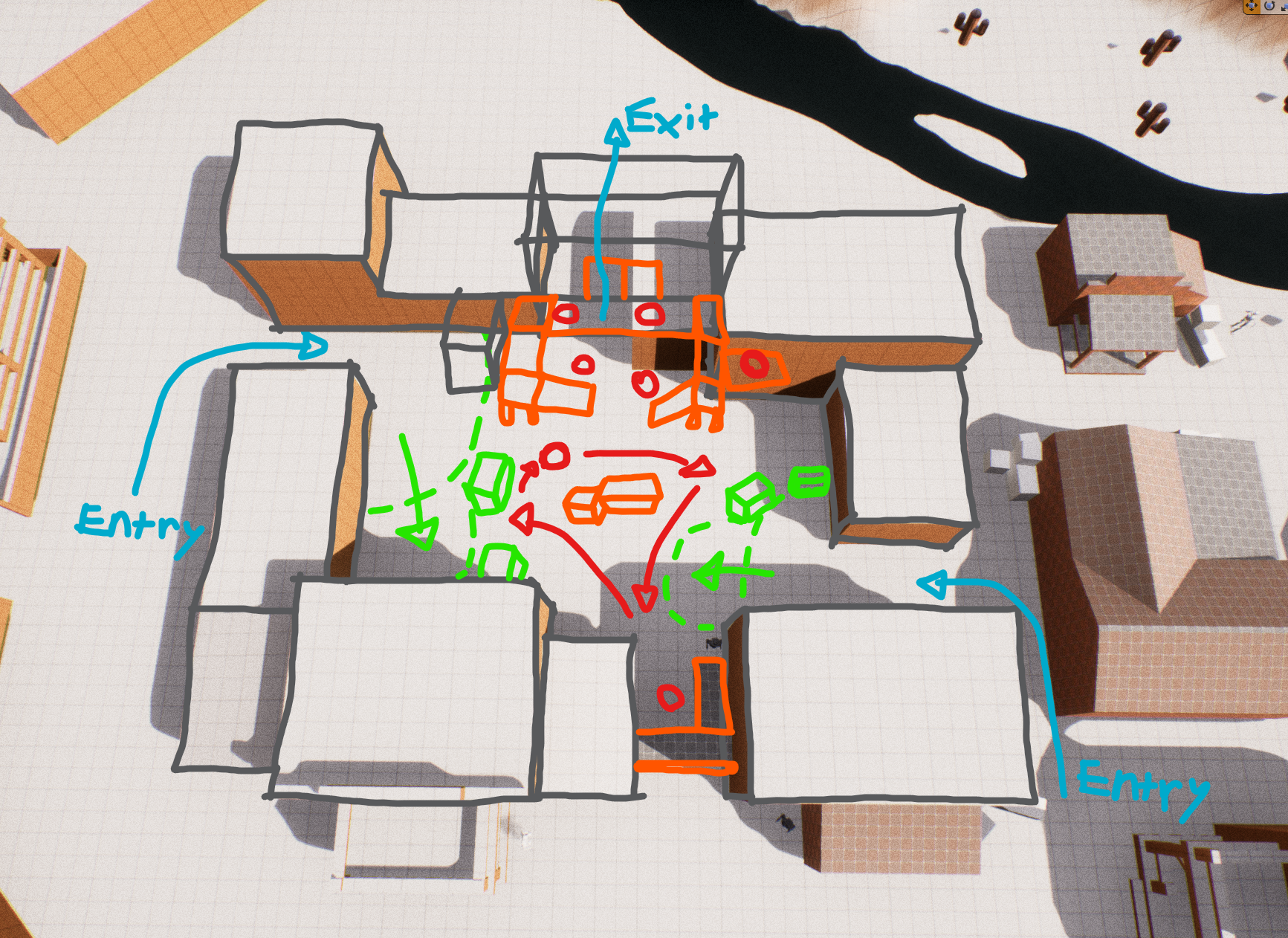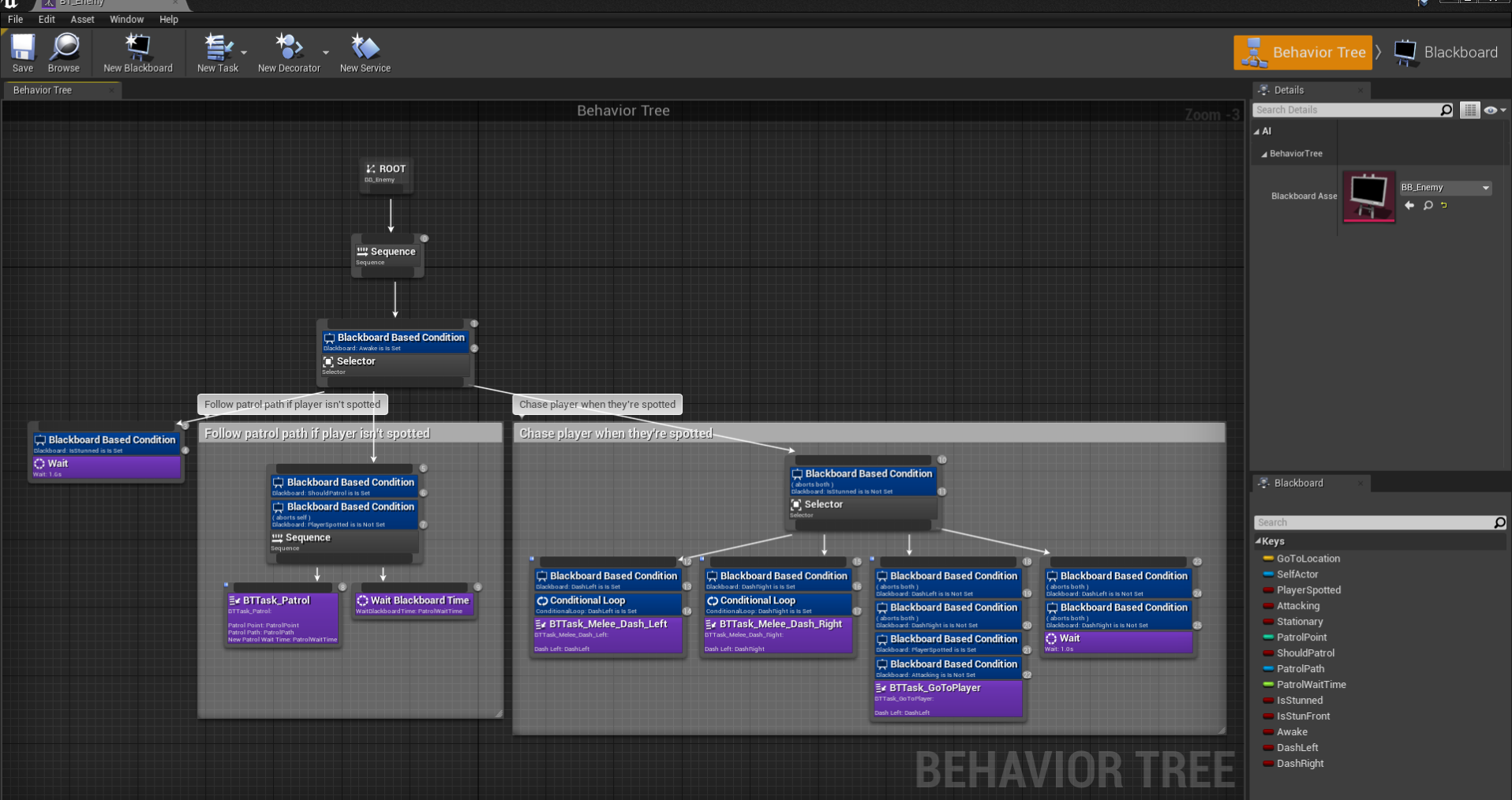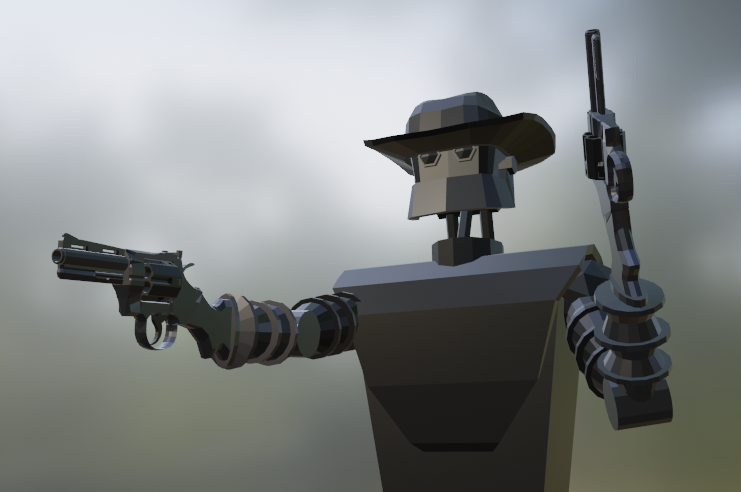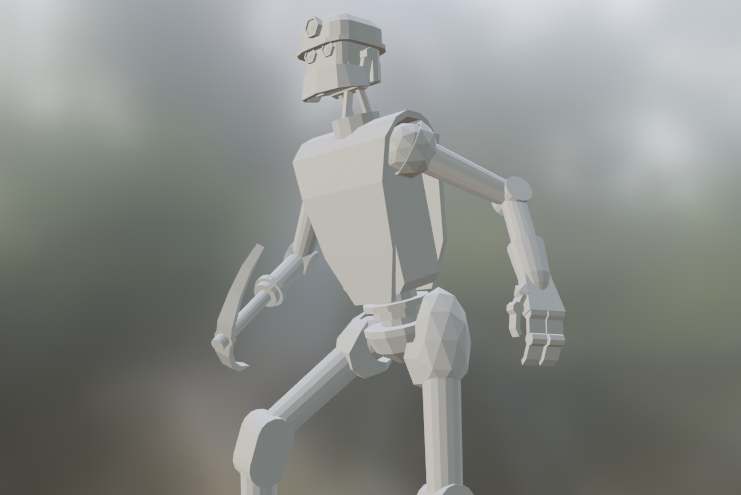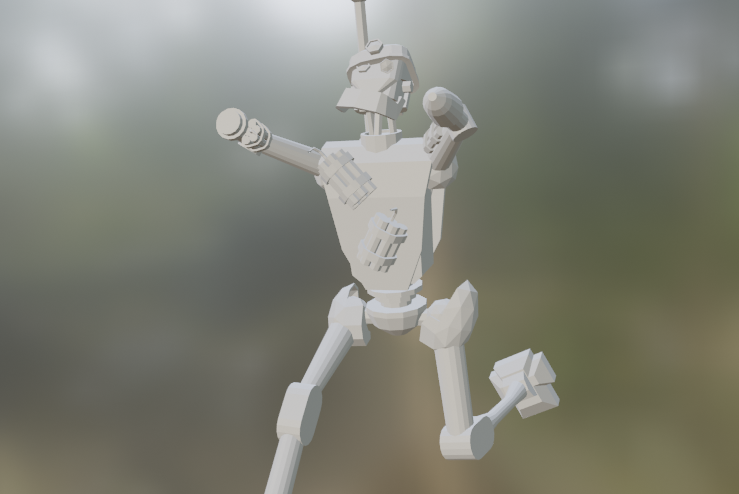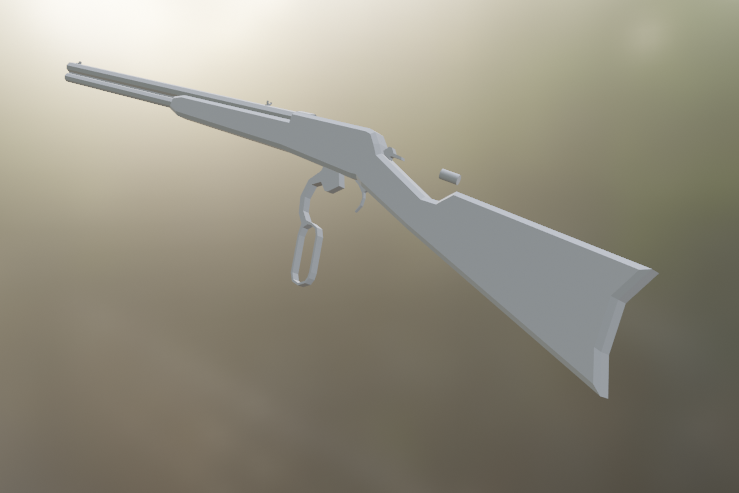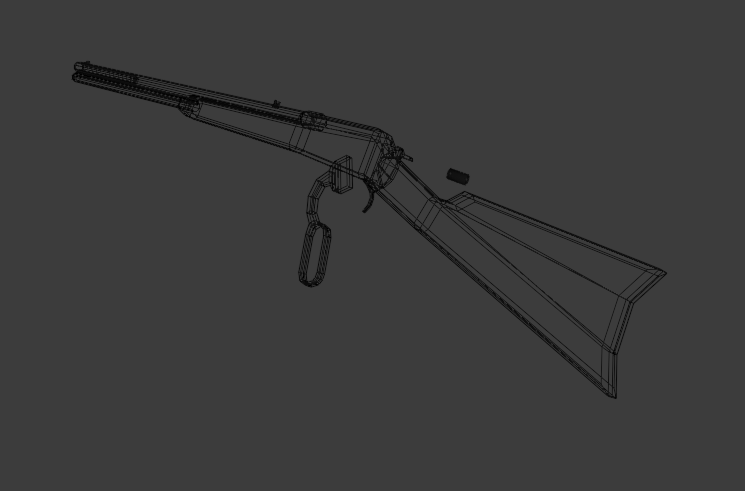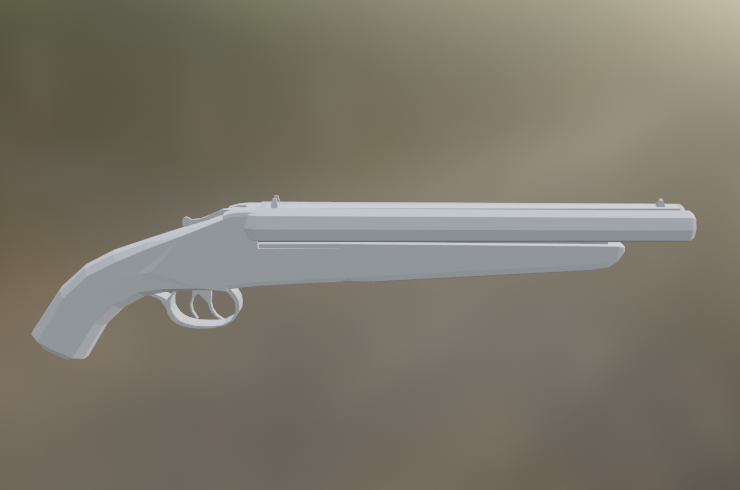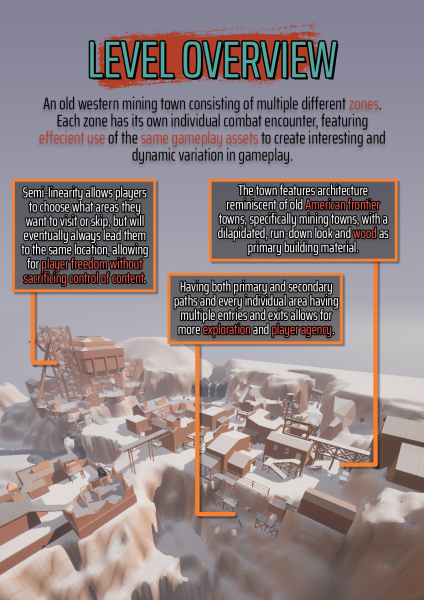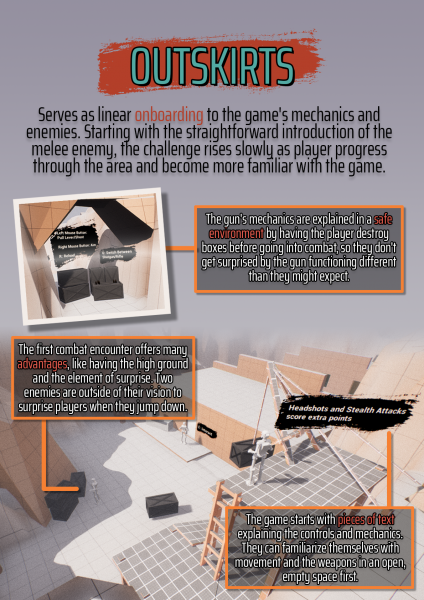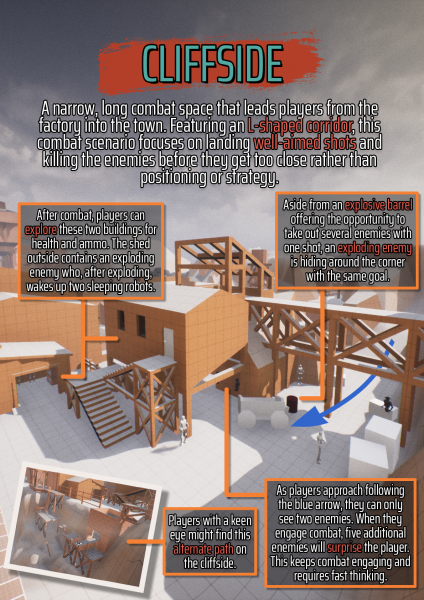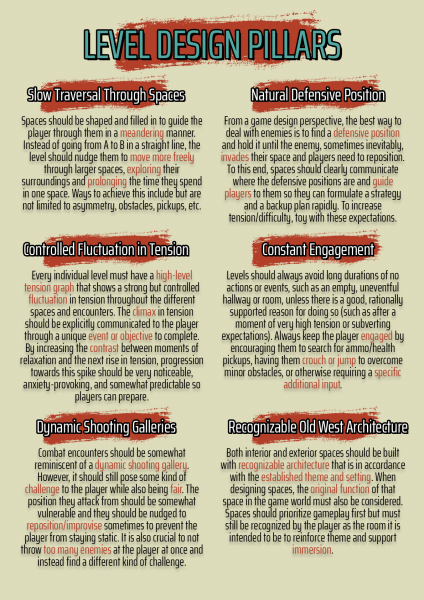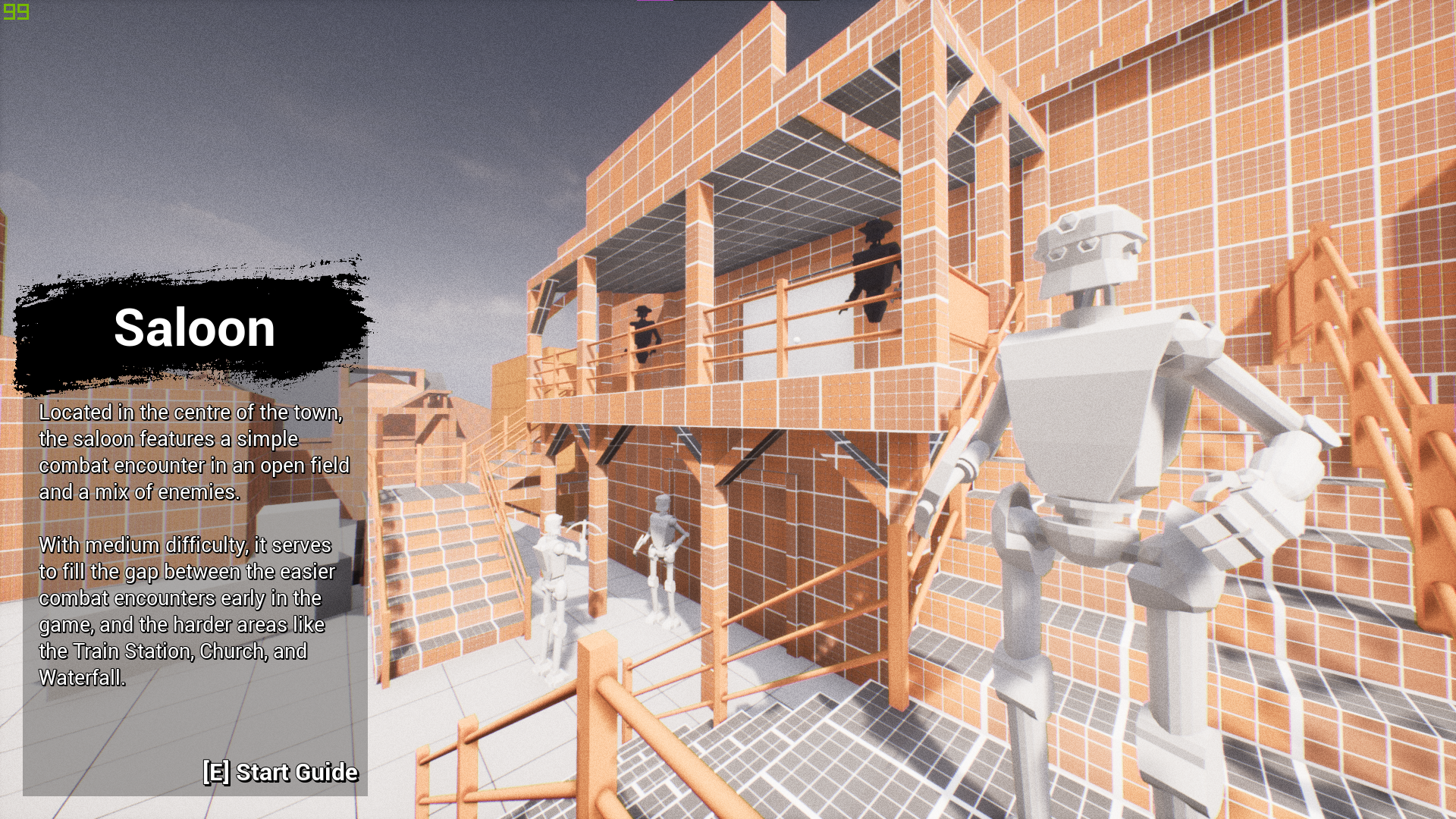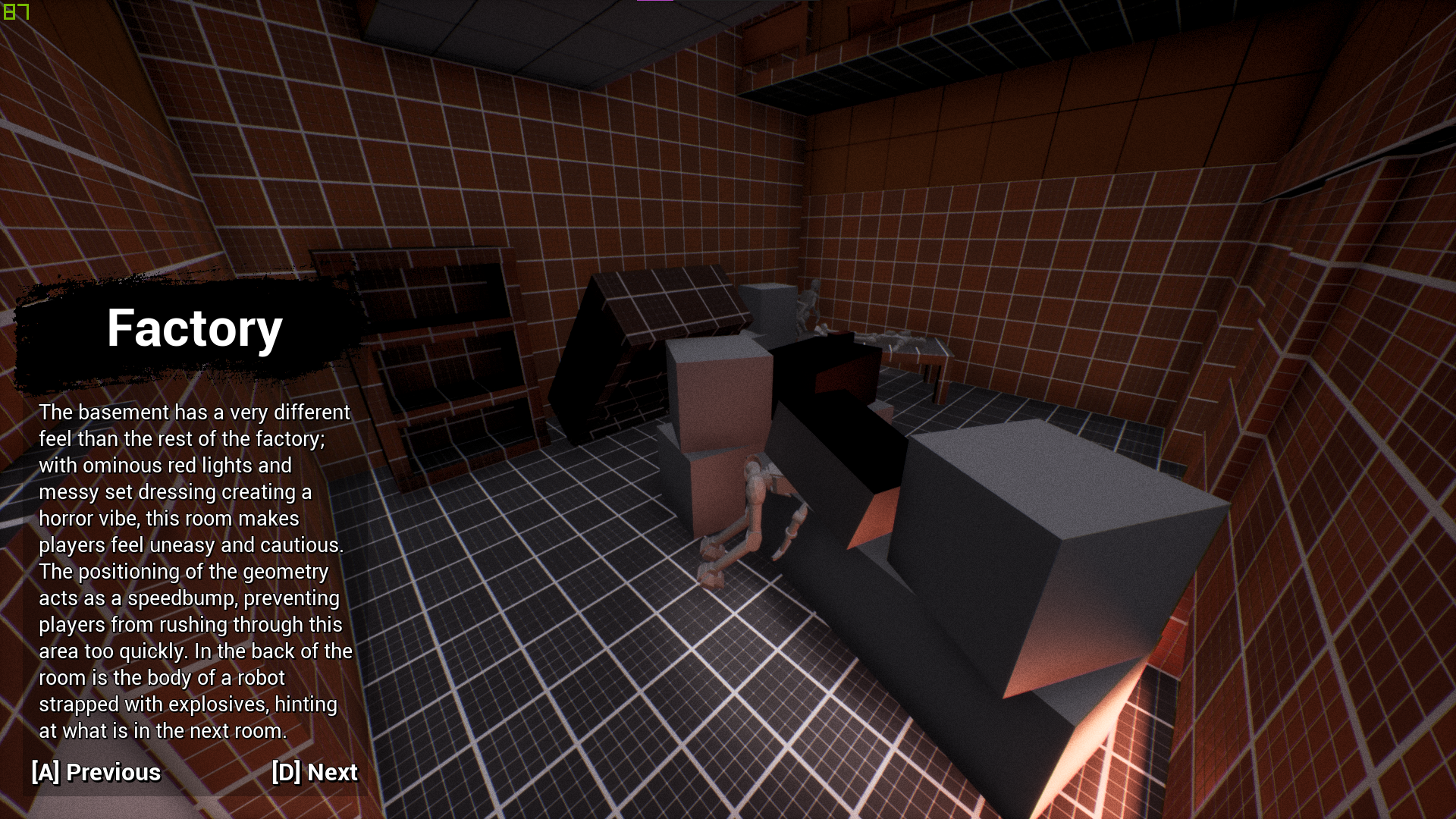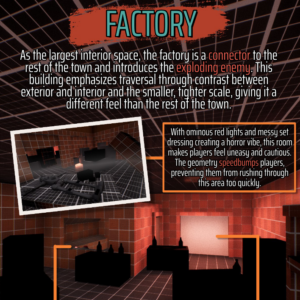A document consisting of one-pagers offering an in-depth look into the level design and thought process behind it.
Read More
About
Brief: Solo personal project in graduation year.
First Release: March 26, 2021
Role: Solo Developer
Engine: Unreal Engine 4
Platforms: Windows
Team Size: 1
Duration: 40 Weeks
MINER MALFUNCTION is a whiteboxed singleplayer first-person shooter developed as a one-man personal project during my graduation year of IGAD. Crashed into an abandoned mining town overrun by malfunctioning mining robots, you must fight your way through the old western town to find a way to escape. Alone with only your lever-action rifle and double barrel shotgun, will you be able to reach the train?
Starting off as a personal project in my spare time, I made it into a year-long project focused on delivering a reinforced whitebox level for a full, closed-loop FPS game. From the core gameplay and its mechanics to the level design and whitebox art assets, this game was developed by me as sole developer.
Together with a level design document consisting of one-pagers about the level, the game comes with a developer commentary mode, offering additional insight into the level design process and decision making.
Full Walkthrough
Design Insight Mode
My Contributions
Designing and creating a whitebox level.
The game takes place in a old western mining town overrun by worker robots. Starting in the outskirts of the town, players must make their way through the town towards the train station.
The town is divided into 8 zones, each using the same set of level design ingredients, but used in different ways and combinations to efficiently keep gameplay interesting and dynamic.
Planning macro and micro layout.
Whiteboxing a large level required planning on both a macro and micro scale. This included planning player progression through the town from start to end, dividing it up into individual zones, and designing combat spaces for each of those zones.
During this process, I primarily made sketches, focusing on low-level gameplay beats, and occasionally abstract node maps that visualized the relative location and connection of spaces. Going from sketching to blocking out, iteration was a large part of the design process, with many paintovers of areas being made to support iterating on the level layout.
Implementing game mechanics with Blueprints.
As sole developer, I wasn’t only responsible for designing features, but implementing them as well. The entire game and its mechanics are made in Unreal Engine 4’s Blueprints, allowing me to both rapidly prototype mechanics as well as polish and iterate on them.
Features I made in Blueprints include two functional weapons, three different kinds of enemies each with their own AI behaviour, a score system, a climactic final event, UI and menus, HUD and other visual feedback, and several other smaller mechanics like health/ammo pickups, explosive barrels, breakable crates and bottles, etc.
Creating and animating whitebox art assets.
Supporting and reinforcing the most important elements of the game, simple whitebox art assets were implemented very early in development. The most prominent assets include the player’s two weapons and the three enemy variations.
The assets were modeled in Blender and often came with a full set of animations; firing and reloading for both weapons with two variations of pulling the lever of the rifle, as well as individual idle, attack, walk, run, and stun animations for each enemy.
Writing level design documentation.
Wrapping up the level design process, I used Photoshop to create a level design document consisting of one-pagers. Each zone had its own page describing the intended player behaviour, the layout, entrances and exits, etc.
All one-pagers combined together offer a comprehensive insight into the level design and its intentions by first introducing the game and the design pillars, and then offering small pieces of information and visuals per individual zone.
Writing developer comments.
Miner Malfunction comes with a separate game mode that allows the user to fly around the level freely and read interactive developer comments, offering a guide through each of the town’s areas.
While the level design document offers high-level information in the form of one-pagers, the dev comments offer a much deeper insight into the level design and the thought process behind it by taking the user through each part of every zone.

